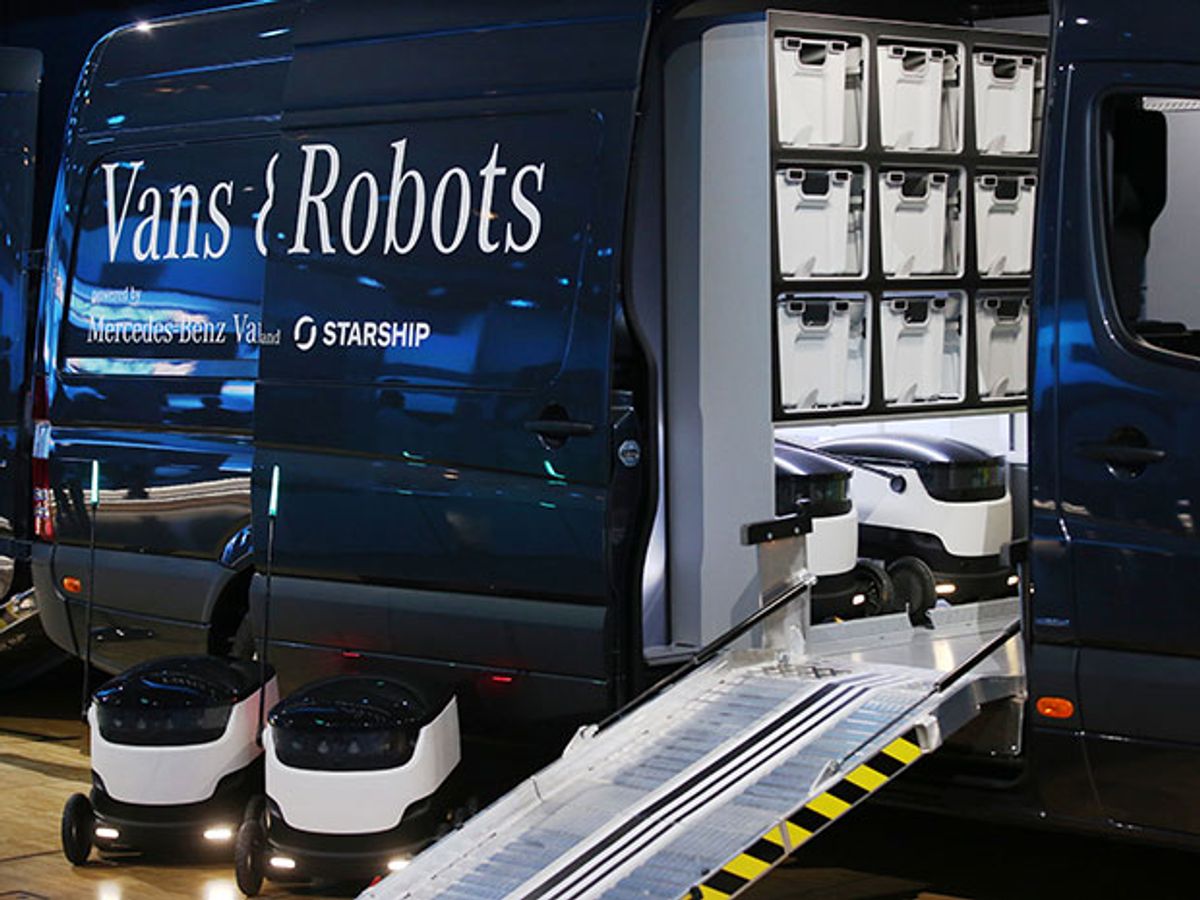Mercedes-Benz is experimenting with small bots to carry cargo over that last, pesky mile to the customer, using a human-driven van to ferry the them over the previous stretch.
The two kinds of bots, aerial and terrestrial, are being supplied by companies we’ve already written about. Matternet is providing its slick M2 quadcopter, several of which would perch on the van’s roof. Starship Technologies is providing its six-wheel robot, eight of which can fit inside a van.
The idea is that the driver of the Mercedes Sprinter van would load up the bots with their various payloads, take an optimized route from one customer to the next, and unleash the automatons. Then, after the bots have made their rounds, the van would pick them up again at some convenient point, carry them back to the warehouse, load them with more cargo and, perhaps, swap out the battery.
Starship Technologies says the bots are autonomous, but adds that each one is monitored remotely and can be taken over by a human driver in a pinch. It seems that in this trial, at least, the human driver will be watching things all the time.
Matternet’s M2 drone can carry up to 2 kilograms (4.4 pounds), which is more than one large pizza (but not quite enough for two). “It can drop and reload a payload and battery without human interaction,” the company says, “and features a smart payload box that can transmit data about its contents and destination. It also has precision landing capabilities and captures proof of delivery.”
However, the M2 follows a predetermined route and apparently does not have the ability to sense and avoid unexpected obstacles, like a passing bird or a recently fallen branch.
The economics of cargo-bot delivery are unclear, even with the added finesse of marrying vans to bots. Wheeled bots can work only in very well-maintained areas—think suburbs with sidewalks. Drone delivery is cost-effective only when you absolutely, positively have to get a small package past an unreliable road system—think delivering medicines and blood samples in rural parts of Africa.
Still, if you improve the batteries, extend the range, add sense-and-avoid tech, and replace the van driver with a fully autonomous driving system, you will have a winner. Think quite a few years from now.
Philip E. Ross is a senior editor at IEEE Spectrum. His interests include transportation, energy storage, AI, and the economic aspects of technology. He has a master's degree in international affairs from Columbia University and another, in journalism, from the University of Michigan.



